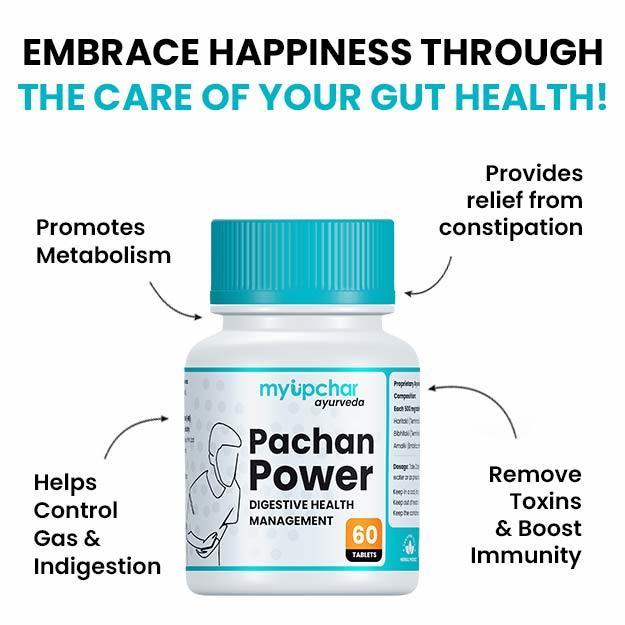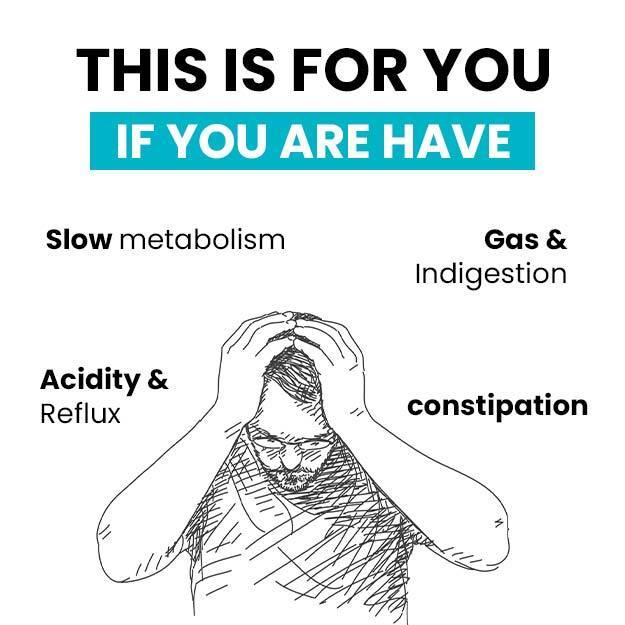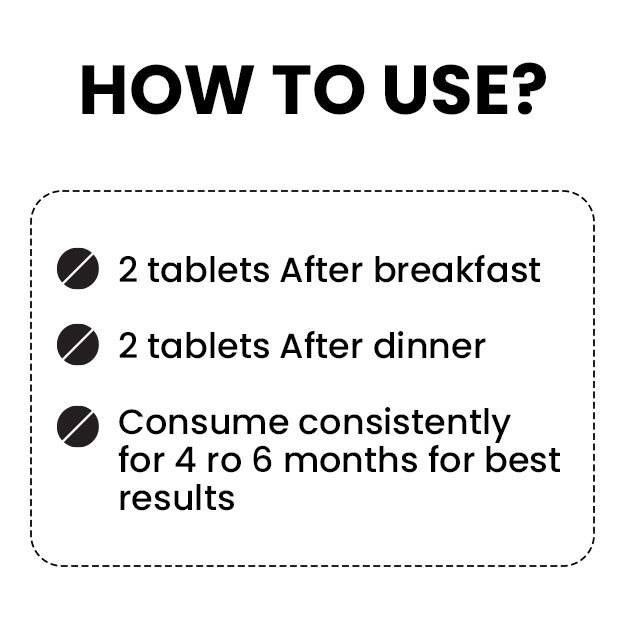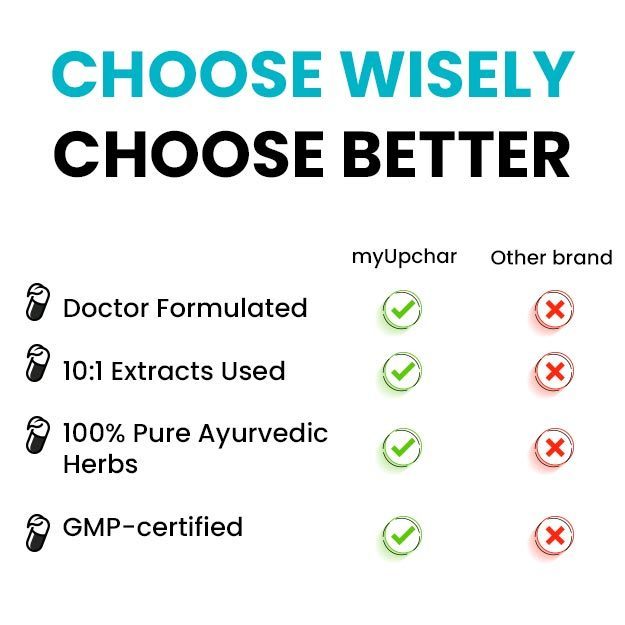Gastritis, classified by Ayurveda as one of the types of amlapitta, is a condition characterised by inflammation and erosion of the stomach lining. Gastritis commonly occurs due to noxious irritants, haemorrhage or infections.
Ayurveda describes treatments like abhyanga (oil massage), vamana (medical emesis) and virechana (purgation) for gastritis. Herbs and medicines that are used for the treatment of gastritis include bilwa (golden apple), amalaki (Indian gooseberry), shatavari (hundred roots), yashtimadhu (mulethi) bhringaraj (bhangra), laghu sootshekhara, sootshekhara, kamadudha rasa, narikela lavana kshara and kapardika bhasma.
- Ayurvedic view of gastritis
- Ayurvedic treatment for gastritis
- Ayurvedic herbs and medicines for gastritis
- Dietary and lifestyle changes for gastritis patient as per ayurveda
- How effective are ayurvedic medicines and treatments for gastritis
- Side effects and risks of ayurvedic medicine and treatments for gastritis
- Takeaway
Ayurvedic view of gastritis
Amlapitta is actually a broad title in ayurvedic medicine. It includes many gastrointestinal disorders such as gastro-oesophageal reflux disease (GERD), gastritis, hyperacidity and peptic ulcer. It most commonly occurs due to faulty and incompatible diet (viruddha anna) leading to an imbalance in doshas.
These three doshas are found in the duodenum, which is the first part of small intestine located just after stomach. Duodenum acts as the seat for agni (digestive fire), which is known to digest food for providing nourishment to the body. An imbalance in doshas affects this agni, which ultimately leads to amlapitta.
Accumulation of ama (toxins) is yet another cause of amlapitta. Together, both these factors induce inflammation in stomach lining.
Ayurvedic texts describe different types of viruddha anna (incompatible food) based on avastha (condition of the food/individual), kram (sequence of eating), dosha, paak (cooking), samyoga (quantity of food) and upachar (treatment). Incompatible food causes aggravated pitta dosha, leading to sour taste in mouth, which is one of the most common symptoms of amlapitta.
Ayurvedic treatment for gastritis
- Abhyanga
- Abhyanga involves the application of herbs or combination medications, in various forms on the whole body or the affected part, depending on the condition of an individual.
- These herbs stimulate the immune system, preventing gastritis caused due to infections.
- Whole body massage using chandana taila and lakshadi taila is recommended for the treatment of gastritis caused due to hyperacidity.
- Vamana
- Vamana is one of the panchakarma (five therapies) methods that involves the administration of single herbs and herbal formulations to induce vomiting.
- This procedure helps in cleansing the stomach and removing toxins from body. It also assists in the removal of excess kapha from body.
- Vamana aids in treating indigestion, poisoning, and inflammation of stomach and intestine.
- Two different types of herbs are used to perform vamana. These include:
- Vamaka herbs: Herbs that directly induce vomiting;
- Vamanopaga herbs: Herbs enhance the effects of vamaka herbs.
- Neem is generally used to induce vomiting in the case of amlapitta.
- Virechana
- Virechana involves the use of herbs and their combinations to induce purgation and evacuate the bowel. It helps in cleansing ama from the body.
- Vamana is primarily used for the elimination of aggravated pitta dosha. Thus, it is effective in the management of all the conditions included in the amlapitta category.
- This procedure can also be used to manage disorders caused by excess kapha as this leads to excess phlegm and bile secretion.
- The dose and type of herb used for virechana procedure are decided on the basis of individual condition and nature of the purgative.
Ayurvedic herbs and medicines for gastritis
Ayurvedic herbs for gastritis
- Bilwa
- Bilwa acts on the digestive, circulatory, nervous and reproductive systems and has nutritive, astringent (constricts body tissues), haemostatic (stops bleeding), tonic, digestive, stimulant, appetising, antiparasitic and fever-reducing properties. All these properties make this herb useful in the treatment of gastritis.
- It is one of the main digestive herbs, which is effective in the management of kapha disorders, some types of indigestion and diseases of the mucous membranes.
- It balances the vitiated vata and kapha and eliminates ama from the body, which is responsible for various diseases.
- Yashtimadhu
- Yashtimadhu acts on the digestive, excretory, respiratory, nervous and reproductive systems and has expectorant (expels phlegm), rejuvenating and tonic properties.
- It relieves irritation and soothes mucous membranes by forming a layer of protective film over it.
- Yashtimadhu also has a mild laxative effect, which soothes and tones the mucosal lining of stomach and relieves spasms and abdominal pain, some of the common symptoms of gastritis.
- It clears the aggravated kapha from stomach and purifies blood.
- Mulethi can be used in the form of an aqueous decoction, milk decoction, with ghee (clarified butter) or as powder.
- In individuals with osteoporosis and hypertension, it can be taken only with milk.
- Shatavari
- Shatavari works well on the digestive, circulatory, digestive and reproductive systems and has nutritive, tonic, antispasmodic, anti-diarrhoeal, anti-dysenteric and appetising properties.
- It nurtures the mucous membrane and detoxifies blood.
- As an immunostimulant,it helps prevent gastritis caused due to infections.
- In addition to gastritis, shatavari is also useful in the management of hyperacidity, ulcers, dehydration, diarrhoea, dysentery and chronic fever.
- Shatavari can be taken in the form of ghee, decoction, powder or oil.
- Amalaki
- Amalaki acts on the circulatory, digestive and excretory systems and has refrigerant, rejuvenating, laxative, astringent, haemostatic, nutritive tonic and appetising properties.
- It is useful relieving gastritis caused due to stomach and colon inflammation.
- Amalaki also cleanses intestines and treats ulcers and gastrointestinal disorders.
- It can be taken in the form of a decoction or powder.
- Bhringaraj
- Bhringaraj acts on the digestive, circulatory and nervous systems and has fever-reducing, wound-healing, laxative, nervine and rejuvenating properties.
- It draws out poison and reduces inflammation and swelling. This makes it an effective remedy for gastritis caused by an external noxious irritant.
- Bhringaraj can be used in the form of an infusion, decoction, powder, oil or ghee.
Ayurvedic medicines for gastritis
- Laghu sootshekhara rasa
- Laghu sootshekhara rasa is prepared from shunthi (dried ginger) and suvarna gairika (yellow ochre) processed with nagaveli patra swarasa (betel leaf juice). It is a well-known medicine for amlapitta and other diseases caused by vitiation of pitta.
- It is useful in the management of heart disease, gastric ulcer and hyperacidity. Hyperacidity is one of the common causes of gastritis, and appropriate treatment of hyperacidity can prevent and treat gastritis.
- This medicine also prevents ulceration of the gastric mucosa in case of gastritis.
- Sootshekhara rasa
- Some ingredients of sootshekhara rasa are shunthi, cinnamon, gandhaka (brimstone), and bhasmas (calcined preparations) of tamra (copper), lauha (iron), and shankha (conch).
- It mainly acts by pacifying the aggravated doshas and lowering stress on the circulatory channels and heart.
- It is useful in treating individuals that have a fever with delirium and is in case of high fever with aggravated pitta dosha.
- Shatapatrayadi churna
- Some of the ingredients of this formulation are shatapatri (rose), guduchi (heart-leaved moonseed), draksha (grapes) and yashtimadhu.
- It can be used in the management of gastritis and other stomach problems as it has a soothing effect on the lining of stomach.
- It pacifies the vata and pitta doshas.
- This medicine is also known to have wound healing properties and can treat stomach and duodenal ulcers.
- Kamadudha rasa
- It is a herbomineral medicine prepared from guduchi and shuddha suvarna gairika (purified yellow ochre) processed with amalaki.
- It is beneficial in the treatment of gastritis and numerous bleeding disorders.
- Narikela lavana kshara
- It is one of the classical formulations of Ayurveda, which includes narikela (coconut) and saindhava lavana (rock salt). Both these ingredients have pitta-pacifying properties. As gastritis is characterised by aggravated pitta dosha, narikela lavana kshara is an excellent choice of medicine for the management of this condition.
- This formulation has kshara (alkalising) properties, which makes it useful in the treatment of hyperacidity and peptic ulcer.
- Kapardika bhasma
- Kapardika bhasma is prepared from of shuddha kapardika (purified marine shell), nimbu swarasa (lemon juice) and kumari swarasa (aloe juice).
- This Ayurvedic medicine is known to have powerful antacid properties and can help in the treatment of gastritis and other gastric disorders.
As treatments vary according to numerous factors and an individual’s prakriti (constitution), consult a qualified Ayurvedic doctor for the appropriate medications and treatments for your specific complaints.
Dietary and lifestyle changes for gastritis patient as per ayurveda
Do’s
- Include barley, green gram, patola (pointed gourd), bitter gourd and green vegetables in your diet.
- Drink cool water.
Don’ts
How effective are ayurvedic medicines and treatments for gastritis
A comparative clinical study, including 41 participants, indicated the usefulness of Ayurvedic therapies in the management of gastritis. The study involved administration of either a Shatapatryadi churna tablet or a patoladi yoga tablet in a dosage of 500 mg twice a day for 30 days. Significant improvement was reported in burning sensation in the abdomen, heartburn and sour eructations in both the groups. However, quality of sleep was also found to improve with shatapatryadi churna tablet and the overall effectiveness of shatapatryadi churna tablet was found to be better than patoladi yoga tablet.
Side effects and risks of ayurvedic medicine and treatments for gastritis
Ayurvedic medicines are considered safe to be used when taken under the guidance of an experienced doctor. However, depending on individual physiology and disease condition, certain medicines may induce some side effects. e.g.,
- Vamana should not be used in pregnant women and in individuals with heart problems and hypertension.
- Virechana is contraindicated in weak or elderly individuals, and in pregnant or menstruating women. It is not advisable for individuals suffering from anorectal injury, rectal prolapse, diarrhoea, bleeding from the lower part of gastrointestinal tract, and individuals who have undergone basti karma (enema therapy).
- Bhringaraj should be used with caution as it may cause severe chills.
Takeaway
Gastritis refers to an inflammation in the stomach lining, which could be caused due to infections or exposure to environmental irritants. Managing this condition in the initial stages can help prevent it from progressing to an ulcer.
For the treatment of gastritis, Ayurveda describes various herbs, medicines and panchakarma methods that have a cooling and soothing effect on stomach. Ayurvedic treatment can also help balance doshas and eliminate toxins from the body, which are responsible for most disease conditions.
However, an Ayurvedic physician should be consulted before beginning any of the above-described treatments to obtain better results and improve your condition faster.
Find Ayurvedic Doctor in cities
Doctors for Ayurvedic medicine, treatment and remedies for Gastritis

Dr. Ayush Bansal
Ayurveda
2 Years of Experience

Dr. Megha Sugandh
Ayurveda
6 Years of Experience

Dr. Nadeem
Ayurveda
3 Years of Experience

Dr.Ashok Pipaliya
Ayurveda
12 Years of Experience
References
- Central Council for Research in Ayurvedic Sciences. [Internet]. National Institute of Indian Medical Heritage. Handbook of Domestic Medicine and Common Ayurvedic Medicine.
- Lakshmi C. Mishra. Scientific basis for ayurvedic medicines. C.R.C Press.
- Singh Vijeyta. et al. Efficacy of Virechana Karma and Khanda Pippali Avaleha in the Management of Amlapitta: A Review. Int. J. Res. Ayurveda Pharm. 7(4), July-Aug 2016.
- Nilofer Sayed, Vandana Barve. Evaluation of Antiulcer Activity of Laghusoothshekhar (an Ayurvedic Formula) in Pyloric Ligature Induced Gastric Ulcers in Albino Rats . American Journal of Undergraduate Research . Volume 13. Issue 2.
- Mukund Sabnis. Viruddha Ahara: A critical view. Ayu. 2012 Jul-Sep; 33(3): 332–336. PMID: 23723637.
- Swami Sadashiva Tirtha. The Ayurveda encyclopedia. Sat Yuga Press, 2007. 657 pages.
- Nishant Singh. Panchakarma: Cleaning and Rejuvenation Therapy for Curing the Diseases . Journal of Pharmacognosy and Phytochemistry. ISSN 2278- 4136. ZDB-Number: 2668735-5. IC Journal No: 8192.
- Subhash Ranade. kayachikitsa. Chaukhamba Sanskrit Pratishthan, 2001.
- Gangadhar Gopal Gune. Aushadhi Gun-Dharmashastra. National Library of Ayurved Medicine.
- Jitendra Kumar. et al. A comparative clinical study of Shatapatrayadi churna tablet and Patoladi yoga in the management of Amlapitta. Ayu. 2011 Jul-Sep; 32(3): 361–364. PMID: 22529651.
- Pranjali Langade. et al. Pharmaceutico Analytical Study of Kamdudha Rasa - An Ayurveda Formulation. Journal of Research in Traditional Medicine. J. res. tradit. med. Volume 3. Issue 3.
- Yadav S, Sharma K and Kaur N: Characterisation of Narikela lavana. Int J Pharm Sci Res 2017; 8(5): 2200-04.doi: 10.13040/IJPSR.0975-8232.8(5).2200-04.
- Roshi Mahajan. et al. Role of Narikela Lavana in the Management of Amlapitta. International Journal of Research in Ayurveda and Pharmacy 7(3):50-52. DOI: 10.7897/2277-4343.073111.
- Sonali Dhamal. et al. Chemical Investigations of Some Commercial Samples of Calcium Based Ayurvedic Drug of Marine Origin: Kapardika Bhasma. Journal of Pharmacy and Biological Sciences (IOSR-JPBS). e-ISSN: 2278-3008, p-ISSN:2319-7676. Volume 6, Issue 4. (May. – Jun. 2013), PP 05-12.
- Acharya Vipul Rao. Ayurvedic treatment for common diseases. Publisher Diamond Pocket Books. 152 pages.




















